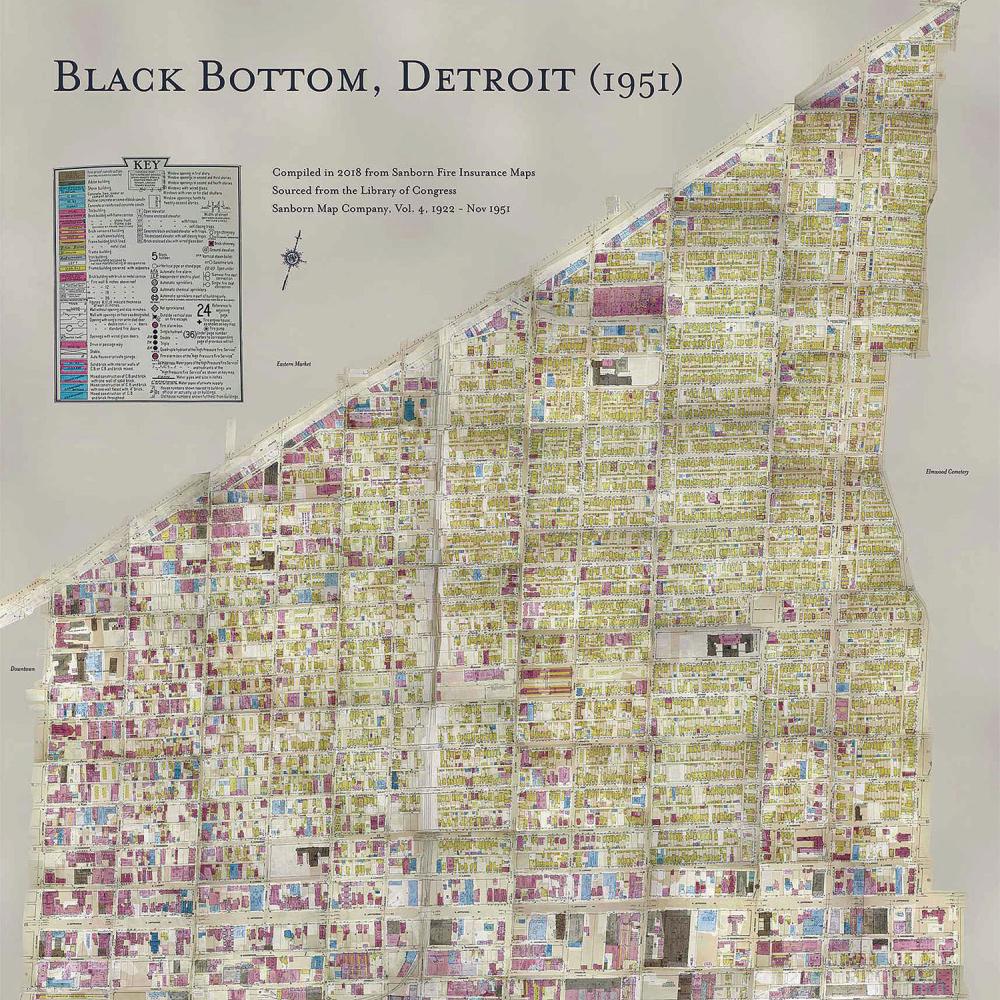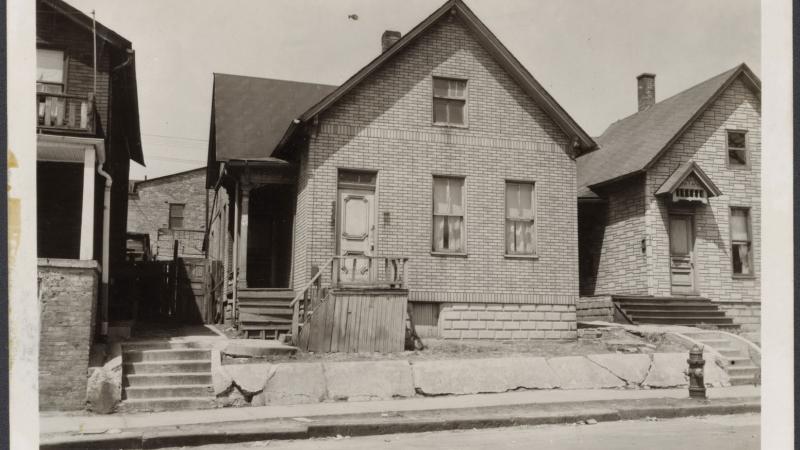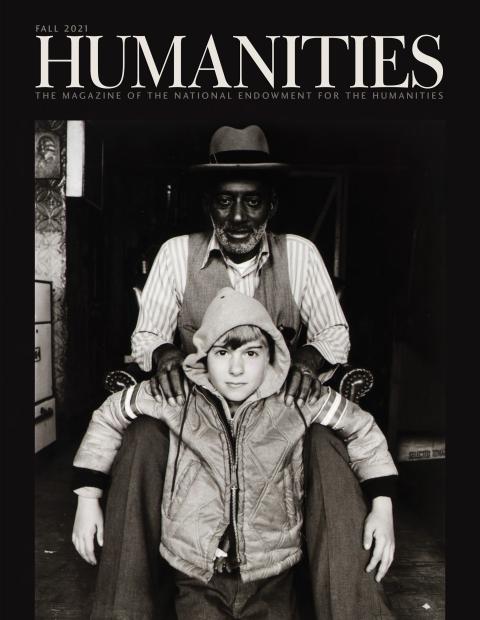During its heyday in the 1930s and ’40s, the legendary Detroit neighborhood of Black Bottom was home to more than a hundred thousand African Americans and their businesses. Then came urban renewal and, by 1960, this unique town and its community were gone, enduring only in memory, though the keepers of that memory have been working especially hard of late.
Paige PG Watkins is dedicated to helping record the story of this neighborhood that no longer exists. “We wanted to create a hub where people could access all of this great history,” says Watkins, the twenty-eight-year-old director and cofounder of Black Bottom Archives.
Founded in 2014, Black Bottom Archives is a community-driven media platform dedicated to gathering and amplifying the voices, experiences, and perspectives of Black Detroiters through digital storytelling, journalism, art, and community organizing, with a focus on preserving local Black history. It received a grant from the Michigan Humanities Council for its street view photo project. The organization operates a website and has collected powerful oral histories of people who grew up in the area during the 1940s and 1950s.
The name Black Bottom actually came from the area’s rich, dark soil farmed by French settlers in the eighteenth century, not the African-American population that settled there during the Great Migration. Its boundaries, whose maps are included in the archive, are considered by many to be Gratiot Avenue and East Vernor Highway to the north; the Grand Trunk Railroad or Chene to the east; Congress or Lafayette to the south; and Brush Street to the west.
In 1910, only about 5,700 Black Americans lived in Detroit. Two decades later, that population had skyrocketed to 120,000. Many Black residents in that period lived in Black Bottom, east of downtown Detroit, alongside European immigrants whose families had arrived in the nineteenth century. By 1942, within Black Bottom and Paradise Valley, the Black commercial district located immediately north, more than 300 Black-owned businesses—bars and restaurants, doctor’s offices, barber shops, hair salons, hotels, and drug stores—were in operation.
Coleman A. Young was around five years old when he moved to Black Bottom in 1923 with his father from rural Jim Crow-era Tuscaloosa, Alabama. His father, William Coleman Young, operated a dry cleaning and tailoring business and also worked as a clerk for the U.S. Postal Service. The son, who would become Detroit’s first Black mayor in 1974, recalled the success of Black Bottom residents during the 1920s and early 1930s Prohibition era.
“I never saw prosperity in the black community—hell, in the city—as there was then. The money was practically jumping from pocket to pocket in those days. If you weren’t making any, you either weren’t trying or were inhibited by an unusual code of lawfulness,” he wrote in his 1994 memoir Hard Stuff: The Autobiography of Coleman Young.
During the 1920s and early 1930s, Black Bottom was an “ethnic smorgasbord,” according to Young. By the mid 1930s, Black Bottom was a predominantly Black neighborhood and a large portion of it was poor.
Its notable Black residents included Ralph Bunche, who became a United Nations official and the first African American to earn a Nobel Peace Prize; Charles Diggs Jr., who became Michigan’s first Black U.S. House member in 1955; actress and recording artist Della Reese; and Zeline Richard, a teacher and an official with the Detroit Federation of Teachers and the Michigan Democratic party during the 1960s and ’70s.
Detroit city government, led primarily by mayors Edward Jeffries Jr. and Albert E. Cobo, razed the community during the 1950s and early 1960s. The process started in April 1946 when Mayor Jeffries asked the Common Council, the city’s legislative branch, for authority to demolish the aging Black Bottom neighborhood in the name of urban renewal.
Three years later, President Harry Truman signed the American Housing Act that pumped hundreds of millions of dollars into cities like Detroit with a goal of building 810,000 public housing units throughout the United States by 1955.
By that time, nearly 100 acres of Black Bottom were gone. The loss of the neighborhood was felt deeply. Discrimination in real estate, banking, and local government made it virtually impossible for African Americans to move to other sections of the city. A popular phrase spoken by Blacks at the time was “Urban renewal means Negro removal.”
Mayor Cobo, a conservative Republican who was the GOP nominee for governor in Michigan in 1956, sought to have the private sector redevelop the land and not use federal dollars that the American Housing Act offered. But there were no takers.
Ultimately, it was the Citizens Redevelopment Corporation, a cooperative organization, which, armed with a $10,000 investment from the Walter Reuther-led United Auto Workers, helped get the project off the ground.
“The UAW-CIO is vitally concerned with the elimination of Detroit’s slums and in the redevelopment of blighted areas,” Reuther wrote to Cobo in 1954. “The Gratiot-Orleans areas are both a challenge and an opportunity.”
In 1956, ground was broken on the Lafayette Pavilion, the first of several high-rise apartment buildings geared toward middle-class individuals and families. What had been Black Bottom was replaced with Lafayette Park, a largely white residential district. By 1964, the Chrysler Freeway, I-375, ran through the former neighborhood. The 1970 U.S. Census pointed out that three-quarters of Lafayette Park was white, according to the Detroit Free Press. Former Black Bottom residents moved to sections of the city where Blacks were wel-comed, such as neighboring communities to the east and west, where the African-American middle class had lived since the 1920s. In a 1974 headline, the Free Press described the process as a “fiasco” because thousands were displaced with little or no assistance from the local government.
Today, Lafayette Park is considered by many a masterpiece in urban planning. The 1950s modern design of floor-to-ceiling glass and shiny aluminum, which was carried out and inspired by the noted German-American architect Ludwig Mies van der Rohe, is renowned. The community has a place on the National Register and was designated a National Historic Landmark in
2015. Similarly, the Black Bottom community was recognized and given a Michigan Historical Marker this past summer.
Watkins believes that even more can be done to preserve the history. Black Bottom Archives is partnering with the Detroit Historical Society to carry out a walking tour where the community once sat. The organization is also working to inspire more people to schedule oral history interviews with the archive.
“We encourage people to tell their stories and share more about the history that folks lived,” says Watkins.




